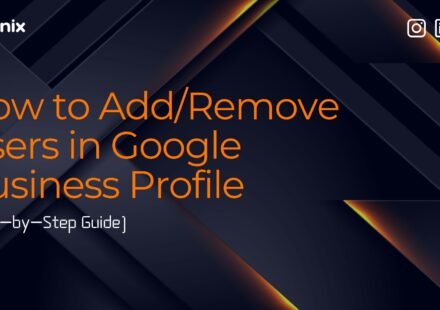The GEO Revolution: How to Keep Your Brand Visible in an AI-Driven Market

Search is evolving, and it’s moving fast.
Today, when you search for something on Google, you’re more likely to see AI-generated responses than just a list of links.
For marketers, this marks a major shift. To stay ahead, it’s no longer enough to rank in traditional search results; you need your brand to appear inside AI-generated answers.
That’s where Generative Engine Optimization (GEO) comes in.
This blog will cover GEO and highlight the need to adjust to AI-driven search by applying tactics such as strategic keyword use, credibility building, incorporating statistics, and improving fluency.
Let’s get started.
Key Takeaways
- GEO merges traditional SEO with Artificial Intelligence, focusing on optimizing content for AI-driven search engines such as Gemini and ChatGPT that deliver context-aware responses.
- Conversational content that incorporates statistics, quotations, and direct answers tends to rank higher in AI-powered searches.
- Generative Engine Optimization improves content visibility by aligning it with AI-driven search requirements, emphasizing authority, relevance, and clarity.
- GEO strategies might include authoritative sources, technical terms, and fluency to enhance user engagement.
Why Does GEO Matter?
AI-driven search is rapidly gaining popularity.
ChatGPT became the fastest app ever to reach 100 million users. Google’s AI Overviews are now showing up in billions of searches every month. Increasingly, people are turning to AI assistants for everything from shopping advice to research support.
AI assistants also influence buying decisions. If your brand or product shows up in AI-driven answers, you’re automatically considered. If it doesn’t, you might be invisible to potential customers. Key benefits of investing in generative engine optimization include:
- Organic visibility without paying for ads
- Attract high-quality visitors to your website
- Keep your brand visible around the clock
- Build stronger credibility within your industry
GEO vs. SGE: A Quick Comparison
To fully grasp the importance of GEO, at Qtonix, we believe that every brand needs to see it as the bridge between traditional SEO and the new era of AI-driven search. Let’s take a closer look at how Generative Engine Optimization differs from Search Generative Experience.
| Aspects | Search Generative Experience (SGE) | Generative Engine Optimization (GEO) |
| Definition | Google’s AI-driven search feature that generates direct, conversational answers instead of just showing links. | A strategy to optimize content so it ranks and appears in AI-generated responses (like SGE, ChatGPT, Gemini). |
| Purpose | Enhance user experience by providing quick, context-rich answers within search results. | Improve brand/content visibility in AI-driven search engines and assistants. |
| Who Controls It | Controlled by Google and other AI-driven platforms that serve results. | Controlled by content creators, SEO specialists, and marketers adapting strategies. |
| Output | Summarized answers, citations, links, product recommendations, comparisons, etc. | Structured, clear, authoritative content optimized to be pulled into those AI summaries. |
| Impact on SEO | Reduces reliance on traditional “blue link” SEO since fewer people click through. | Provides a way to adapt SEO for generative search to maintain or grow visibility. |
| Key Features | AI snapshots, follow-up questions, conversational flow, source citations. | Optimizing for authority, fluency, statistics, quotations, structured FAQs, and relevance. |
| User Benefit | Saves time, gives direct answers, reduces need to browse multiple sites. | Ensures your brand or content appears in generative answers where decisions are influenced. |
| Business/Marketing Role | Platform that delivers the content. | Strategy to make sure your content gets included in the platform’s answers. |
How to Implement Generative Engine Optimization Effectively?
To carry out GEO, focus on publishing relevant content consistently. You can measure your progress with tools like the Semrush AI SEO Toolkit or Semrush Enterprise AIO. These platforms track key metrics such as share of voice, brand mentions, and sentiment across AI search engines, giving you clear insights into whether your GEO strategy is working.
Here’s how you can perform GEO effectively:
1. Understand AI Search Behavior:
- Study how generative engines summarize and attribute content.
- Notice what types of sources (news sites, blogs, forums, government pages, etc.) get cited most often.
2. Structure Content for AI Readability:
- Write in clear, conversational language with direct answers to common questions.
- Use Q&A formats, lists, and concise summaries that models can easily extract.
- Include statistics, quotes, and definitions, since AIs often prioritize authoritative snippets.
3. Boost Authority and Trust Signals:
- Get brand mentions and citations from reputable websites.
- Maintain accurate, well-sourced content with external links to studies, whitepapers, or official sources.
- Ensure your brand name is clearly tied to the information (so AIs pick it up when generating).
4. Optimize for AI Crawlers:
- Make sure your site is technically accessible (fast loading, mobile-friendly, proper metadata).
- Use structured data and schema markup where possible, so AI engines can parse context.
5. Diversify Content Formats:
- Publish across blogs, social media, videos, and podcasts; AI models learn from varied sources.
- Repurpose content into different formats to increase touchpoints with AI training data.
6. Track GEO Performance:
Use tools like Semrush Enterprise AIO or AI SEO toolkits that track:
- Share of voice in AI search results
- Mentions of your brand in generative answers
- Sentiment and visibility trends
Conclusion
To thrive in the evolving AI era, it’s time to rethink AI SEO optimization. While many traditional best practices still matter, new research is reshaping how we approach Generative Engine Optimization (GEO).
For years, marketers have focused on clicks, rankings, and SERP features. But generative engines work differently; they deliver direct answers. This shift is transforming how people discover and engage with online content.
Want to stay visible in AI-generated answers? Let us guide you through the new era of Generative Engine Optimization and ensure your brand leads with authority in AI-powered discovery.
FAQs
Here are the key GEO metrics that help you measure success:
- AIVS (AI Visibility Share): How often your business appears in AI search
- Brand Citation Frequency: Mentions across generative engines
- AI Traffic Attribution: Visitors arriving from AI-driven referrals
- Content Inclusion Rate: Percentage of your content cited in AI summaries
- Audit your existing content for clarity and authority
- Add structured data like FAQ schema
- Develop thought leadership content and expert profiles
- Test prompts on AI engines to see how your brand is represented
- Track brand mentions in AI-generated answers and adjust strategy accordingly
GEO will evolve to include multimodal optimization (text, audio, video), verified author credibility, and possibly paid inclusion opportunities in AI-generated answers. Brands that embrace GEO early will secure a competitive edge as generative search becomes mainstream.
Absolutely. GEO is an extension to SEO, not a replacement. Technical SEO, site speed and optimization, backlinks and links within content, content depth, and description, those metrics are all as valid as they were before. But the key difference is that the focus shifts to AI visibility, ensuring your brand is trusted by a generative engine, has citations, and is more unfathomable than ranking in a search.
Written by Adam Gibbs
Adam is a skilled SEO content expert with a proven track record of crafting high-quality, keyword-rich content that drives traffic, engages readers, and ranks on search engines. With 10+ years of experience in digital marketing and content strategy, Adam specializes in creating blog posts, website copy, and marketing materials tailored to both audience needs and SEO best practices.
Related Posts
A Complete Guide to Adding and Managing Users in Google Analytics 4
How to Add a User to Google Ads: Standard vs. Admin Access Explained
- All Posts
- SEO

Table of Contents Book Intro Call Case Studies Share: Related Guides: Related Posts Step-by-Step Tutorial: How to Share Google Tag...

Table of Contents Book Intro Call Case Studies Share: Related Guides: Related Posts Step-by-Step Tutorial: How to Share Google Tag...

Table of Contents Book Intro Call Case Studies Share: Related Guides: Related Posts Step-by-Step Tutorial: How to Share Google Tag...

Table of Contents Book Intro Call Case Studies Share: Related Guides: Related Posts Step-by-Step Tutorial: How to Share Google Tag...





